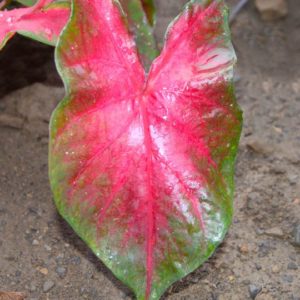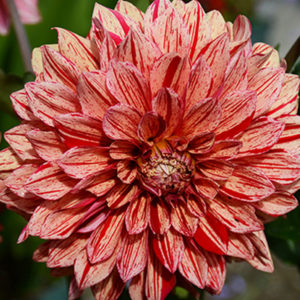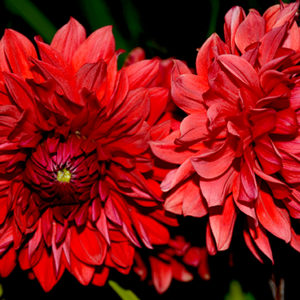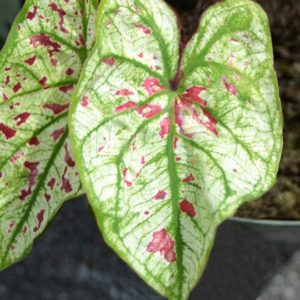Description
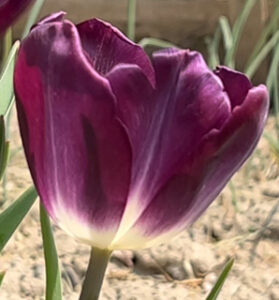 Triumph Tulip,
Triumph Tulip,
Kansas Proud
No other flower captures the magic of spring like the Tulip. Wild tulips are indigenous to the parts of the Middle East once occupied by the Ottoman Empire and to Siberia. Sometime between 1100 AD and 1300 AD, the Persians began to cultivate the wild bulbs. Under cultivation, the small, vividly colored flowers were transformed into stately specimens with blossoms in all the striking colors of the rainbow. It was the Dutch that introduced the Europeans to the tulip in 1562. In that year, a Dutch nurseryman established the first tulip nursery. Today, according to The International Register published by The Royal General Bulbgrowers’ Association in the Netherlands, there are more than 5500 tulip varieties.
Perhaps the most famous and astonishing event in the history of the tulip occurred in the 3 years from 1634-1637. This period in tulip history is known as “The Tulipmania”. A frenzy developed around tulip bulbs and throughout Europe, the rich, the middle class and the working class attempted to purchase whatever tulips were available. One tulip, in particular, a red and white striped variety named Semper Augustus became so valuable that a single bulb was commanding a price the equivalent of 15 years’ wages for an average worker. As quickly as it started, “The Tulipmania” ended. Tulips reached the New World with the first Dutch colonists who settled in what is now Manhattan and coastal New York State in 1624.
The Triumph Tulips have all descended from a cross between a Darwin tulip and a Single Early tulip. They are some of the sturdiest tulips in the garden and as few as 3 bulbs will produce a presence in any garden.
Kansas Proud is a Triumph tulip. The name Triumph was invented in 1923 by Dutch breeder N Zandbergen of Rijnsburg and Dutch growers used the classification to describe the tulips they raised by crossing Single Early Tulips with Darwin Tulips. These tulips usually bloom mid-season. They are known for their intense, dramatic colors, their sturdy stems and height. Even under the most difficult of weather conditions, Triumph tulips stand erect. Kansas Proud is a stunning example of the Triumph Division.
Kansas Proud is a recent member of a much beloved and ancient group of dark-saturated tulips – the purple or black tulips. The purple tulips have been known and grown in Europe since, at least the 1700s. One of the most famous was a beautiful double late tulip generally known as ‘Blue Flag’ but known to French tulip-lovers as ‘Bleu Celeste’. It has been available to the public since 1750 and is still in cultivation today. ‘Blue Flag’ is a fully double, deep purple tulip. The purple color fades to white around the edge of each petal.
In 1891, the Dutch nurseryman, E. H. Krelage, widely considered the “father” of the Darwin Tulips, introduced the blackest tulip to date and named it ‘La Tulipe Noire’ after the famous 1850 Alexander Dumas novel of the same name. However, no dark purple/black tulip was as successful and impactful as Queen of the Night which was introduced in 1944.
Queen of the Night became one of the parents of Geert Hageman’s black tulip. The Hageman tulip was the very first truly black tulip. All the “black tulips” introduced prior to the Hageman tulip were very dark, but they were definitely purple. Hageman’s tulip was black.
In 1986, Hageman announced his tulip at age 29. In 1979, Hageman had crossed the pollen from the ‘blackest’ tulips being cultivated. This effort produced thousands of seeds. He planted the seeds and some produced bulbs. The bulbs were each planted in their own pots. Just after midnight on February 18, 1986, as he was leaving his greenhouse for what remained of the evening, he noticed a black flower. His dream of creating a truly black tulip had been realized.
It took 11 more years to build enough stock to introduce the tulip to the commercial markets. In those years, Hageman considered many names for his remarkable tulip. He finally decided on the name, Paul Scherer, the mayor of a city in Germany. Paul Scherer is still available today and though it is the blackest tulip ever developed, it still shows shades of deep purple
Kansas Proud is not a black tulip, but it is very dark. Its color ranges from deep burgundy to deep purple, but it is not the dark coloring that is the fascinating attribute of this tulip. It is the glistening white feathering that resides at the bottom of each petal. The contrast between the glistening white and the dark purple/burgundy is stunning. Razor thin individual streaks of the feathering can reach high into the petal and produce the reverse effect of shadowing. The blossom shimmers.
The other striking attribute of the Kansas Proud blossom is the elegant arching of individual petals as the blossom matures. Though numerous tulip cultivars produce arching petals, it is the alternating of arching petals that distinguishes this blossom and brings to mind the beauty of a ballerina as she arches her slender arms in response to her music. Once the Kansas Proud blossom is fully mature, most of the petals exhibit some degree of arching. What a beautiful vision this blossom creates.
Kansas Proud is a very tall tulip reaching a height of 20-22 inches. We recommend that you plant the bulbs 10-12 inches deep and 8 inches apart. You will need a minimum of 10 bulbs, planted in a cluster to produce a presence in your garden.
The Tulip has captured the imagination of the world for nearly a millennia. It has built economies, inspired artists and brought joy and pleasure to the everyman. Along with the rose, it is truly the “World’s Flower”.
Planting Bulbs in the Fall for Glorious Spring Color
Bulbs are some of the easiest plants to grow. Fundamentally the process requires four steps.
1. Dig a hole.
2. Dust the hole with bone meal.
3. Place the bulb in the hole.
4. Fill the hole with soil.
There are, however, some additional refinements which help produce even more lavish results and enhance protection from critters.
First, bulbs can and should be planted deeper than the instructions you receive on the package labels. An easy way to remember how deep to plant the bulb is to think of a quarter. If the bulb you are planting has the same diameter as a quarter or less, plant the bulb 4 inches deep. If the bulb is broader than a quarter, plant it 6-10 inches deep. Large bulbs like some alliums, camassias, standard tulips and fritillaries can easily be planted 10 inches deep. As the soil compacts days, weeks and months after planting, it produces a thinner layer of soil on top of the bulb. Planting bulbs deep helps with critter control. Moles, voles, chipmunks and squirrels are lazy little creatures, and they don’t like doing a lot of digging to reach their food.
Second, bone meal is a must. It is an excellent source of calcium and phosphorus which help the bulbs to form a strong root system and healthy stems. For large bulbs (those bigger than a quarter), use ¼ cup per bulb. For small bulbs, dust the entire surface or hole where the bulbs will reside.
Third, small bulbs should be planted in clusters of 10 or more – 1 inch apart. Large bulbs, like allium, can stand along, but create a much more pleasing presence in the garden when planted is clusters of 3-5. They should be separated by no more than 4-6 inches.
Fourth, bulbs usually multiply fairly quickly and once crowded will not produce blossoms. Plan to divide your bulbs in mid-summer to fall when the top growth has dried out.
These simple, easy, quick tasks are all that is required to produce a lovely bulb display year after year.
Planting Bulbs in Containers
If you live in Hardiness Zones 5 and higher all you need to do is mix some soil. Check out the soil mix described in detail in our Harvesting History YouTube video. Do not use prepared soil mixes.
The Best Soil Mix for Containers
Always plant bulbs more densely in containers than in the ground. Pots as small as 6-inches in diameter can have a showy presence on a deck, porch or patio. You can use much larger pots and plant several kinds of bulbs.
Fill the pot half full, dust the soil surface with bone meal, arrange the bulbs on top of the bone meal and fill the pot with the rest of the soil. Dust the surface of the soil with more bone meal. Water thoroughly, but do not let the pot stand in a saucer of water.
If you live in Hardiness Zones 1-4, you must protect the pots by bringing them into an unheated garage or surrounding them with bales of straw. If you do not do this, the bulbs usually freeze and turn to mush.


